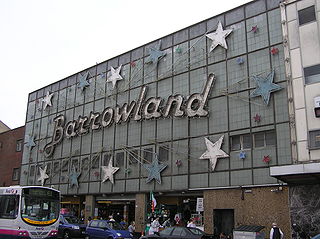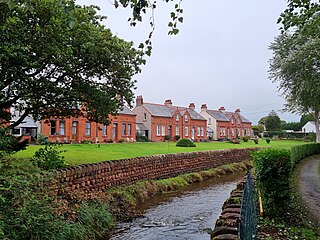Rock music is a broad genre of popular music that originated as "rock and roll" in the United States in the late 1940s and early 1950s, developing into a range of different styles in the mid-1960s and later, particularly in the United States and the United Kingdom. It has its roots in 1940s and 1950s rock and roll, a style that drew directly from the blues and rhythm and blues genres of African-American music and from country music. Rock music also drew strongly from a number of other genres such as electric blues and folk, and incorporated influences from jazz, classical, and other musical styles. For instrumentation, rock has centered on the electric guitar, usually as part of a rock group with electric bass, drums, and one or more singers. Usually, rock is song-based music with a 4
4 time signature using a verse–chorus form, but the genre has become extremely diverse. Like pop music, lyrics often stress romantic love but also address a wide variety of other themes that are frequently social or political.

Greenock is a town and administrative centre in the Inverclyde council area in Scotland and a former burgh within the historic county of Renfrewshire, located in the west central Lowlands of Scotland. It forms part of a contiguous urban area with Gourock to the west and Port Glasgow to the east.

Gourock is a town falling within the Inverclyde council area and formerly forming a burgh of the County of Renfrew in the west of Scotland. It has in the past functioned as a seaside resort on the East shore of the upper Firth of Clyde. Its principal function today, however, is as a popular residential area, extending contiguously from Greenock, with a railway terminus and ferry services across the Clyde.

Cowal is a peninsula in Argyll and Bute, in the west of Scotland, that extends into the Firth of Clyde.

The Barrowland Ballroom is a dance hall and music venue in Glasgow, Scotland.

The Pavilion Theatre is a theatre in Glasgow located on Renfield Street.

The Barrfields Pavilion Theatre is a 500-seat theatre at Barrfields, Largs, North Ayrshire.

Lyle Hill at the West End of Greenock, Inverclyde, Scotland, has scenic viewpoints accessible from Lyle Road which was constructed in 1879–1880 and named after Provost Abram Lyle, well known as a sugar refiner. The hill's highest point is Craigs Top at 426 feet above sea level, and before the road was constructed the hill was known as the Craigs, or as the Bingens.

Manderston House, Duns, Berwickshire, Scotland, is the home of The Rt Hon. The 4th Baron Palmer. It was completely rebuilt between 1901 and 1903 and has sumptuous interiors with a silver-plated staircase. The proprietor, Sir James Miller, 2nd Baronet (1864–1906), told the architect, John Kinross, that there was no budget: "It doesn't matter". The house is a Category A listed building and the surrounding area, which includes the farm complex at Buxley, is listed in the Inventory of Gardens and Designed Landscapes in Scotland.

The King's Theatre is located in Glasgow, Scotland. It was built for Howard & Wyndham Ltd under its chairman Baillie Michael Simons as a sister theatre of their Theatre Royal in the city and was designed by Frank Matcham, opening in 1904. The theatre is primarily a receiving house for touring musicals, dance, comedy and circus-type performances. The theatre also provides a prominent stage for local amateur productions. The King's Theatre also stages an annual pantomime, produced by First Family Entertainment. The theatre is currently operated by the Ambassador Theatre Group, under a lease from Glasgow City Council who own the building.

Empire Exhibition, Scotland 1938 was an international exposition held at Bellahouston Park in Glasgow, from May to December 1938.

The Alhambra Theatre, Glasgow opened on 19 December 1910 at the corner of Waterloo Street and Wellington Street, Glasgow under the direction of Sir Alfred Butt and was acknowledged as one of the best equipped theatres in Britain, planned to accommodate 2,800 people.

Penkill Castle is a 16th-century castle with later additions. It is around 1⁄2 mile south of Old Dailly, northeast of Girvan in south Ayrshire, Scotland.

Riverbend Music Center is an outdoor amphitheater located in Cincinnati, Ohio, along the banks of the Ohio River. It has a capacity of 20,500 and was built for the Cincinnati Symphony Orchestra, to allow them to play in an outdoor venue during the summer months. Its location is directly adjacent to Coney Island water park and Belterra Park. Famed architect and 2012 Driehaus Prize winner Michael Graves designed the building. The venue is owned by the Cincinnati Symphony Orchestra, booked and operated by its subsidiary, Music and Event Management Incorporated (MEMI) and also partners with Live Nation.
The Bonnington Pavilion or Hall of Mirrors, now a ruin, is situated in the grounds of the old estate of Bonnington, near New Lanark, overlooking Corra Linn falls on the River Clyde in Lanarkshire, Scotland. Alternative names are the Corra Linn Pavilion and the Falls of Clyde summerhouse. It is said to have been the first Camera obscura built in Scotland. The name comes from the Gaelic 'currach', a marshy place. A legend gives 'Cora' as a daughter of King Malcolm II, who leapt to her death here whilst trying to escape imagined danger.

The megalithic Kempock Stone, popularly known as Granny Kempock, stands on a cliff behind Kempock Street, the main shopping street in Gourock, Scotland. The stone, or menhir, is grey mica schist and of indeterminate origin, but it has been suggested that it is an old altar to the pagan god Baal, or a memorial to an ancient battle. Supposedly there is a superstition that for sailors going on a long voyage or a couple about to be married, walking seven times around the stone would ensure good fortune. A flight of steps winds up to the stone from Kempock Street below.

The Gaiety Theatre is a category B listed performing arts venue in Ayr, Scotland. It is noted for its interior rococo features, its atmosphere and its acoustics.
The British folk revival incorporates a number of movements for the collection, preservation and performance of folk music in the United Kingdom and related territories and countries, which had origins as early as the 18th century. It is particularly associated with two movements, usually referred to as the first and second revivals, respectively in the late 19th to early 20th centuries and the mid-20th century. The first included increased interest in and study of traditional folk music, the second was a part of the birth of contemporary folk music. These had a profound impact on the development of British classical music and in the creation of a "national" or "pastoral" school and led to the creation of a sub-culture of folk clubs and folk festivals as well as influential subgenres including progressive folk music and British folk rock.
Fort Matilda is a suburb at the far western edge of Greenock, Scotland. Its name comes from a coastal battery built on Whiteforeland Point 1814–1819 to defend the River Clyde.

Powfoot is a coastal village in Dumfries and Galloway, Scotland that lies on the northern shore of the Solway Firth.














